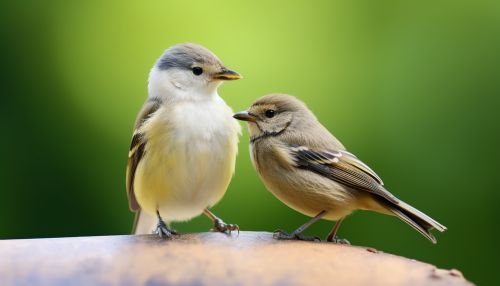Commensalism
Introduction
Commensalism is a type of biological interaction that occurs between two living organisms where one organism benefits from the other without causing it any harm. The term is derived from the Latin word 'commensalis', meaning 'sharing a table'. In the context of biology, it refers to a relationship between two organisms where one organism benefits, and the other is neither harmed nor benefited. This type of relationship can be observed in various ecosystems and across a wide range of species.


Types of Commensalism
Commensal relationships can be categorized into several types, including inquilinism, metabiosis, micro-predation, and phoresy.
Inquilinism
Inquilinism is a form of commensalism where one organism lives within the habitat of another, benefiting from its environment but not affecting it in any significant way. An example of this is the relationship between epiphytic plants and the trees they grow on. The epiphytic plants benefit from the elevated position, which provides them with more sunlight, but the tree is neither harmed nor benefited.
Metabiosis
Metabiosis is a type of commensalism where one organism benefits from the aftermath of another organism's life processes. For example, when a tree dies and decays, it becomes a habitat for fungi and insects, which benefit from the nutrients and shelter provided by the dead tree.
Micro-predation
Micro-predation is a form of commensalism where one organism feeds on part of another organism without killing it. This is seen in the relationship between mosquitoes and humans, where the mosquito benefits by feeding on human blood, but the human is not significantly harmed.
Phoresy
Phoresy is a type of commensalism where one organism attaches itself to another for transportation. An example of this is the relationship between mites and beetles, where the mites attach themselves to the beetles for transportation to new food sources.
Examples of Commensalism
Commensal relationships are widespread in nature and can be observed in a variety of ecosystems.
Marine Commensalism
In marine environments, commensal relationships are common. For example, the relationship between barnacles and whales is a form of commensalism. Barnacles attach themselves to the skin of whales and benefit by gaining access to nutrient-rich waters and a means of transportation, while the whale is neither harmed nor benefited.
Terrestrial Commensalism
On land, commensal relationships can be observed between different species of animals and plants. For instance, the relationship between cattle egrets and livestock is a form of commensalism. The egrets follow the livestock and feed on the insects stirred up by their movement, while the livestock are unaffected.
Impact on Ecosystems
Commensal relationships play a crucial role in maintaining the balance of ecosystems. They can influence population dynamics, nutrient cycling, and habitat structure. For instance, the relationship between epiphytic plants and trees can influence the structure of forest canopies, affecting the availability of resources for other species.
Evolutionary Aspects
From an evolutionary perspective, commensal relationships can lead to co-evolution, where the evolution of one species influences the evolution of the other. This can result in adaptations that enhance the commensal relationship, such as the development of specialized structures for attachment in phoretic species.
Conclusion
Commensalism is a fascinating aspect of biology that illustrates the complexity of interactions between organisms. It plays a vital role in shaping ecosystems and driving evolutionary processes. Understanding these relationships can provide insights into the functioning of ecosystems and the evolution of species.
